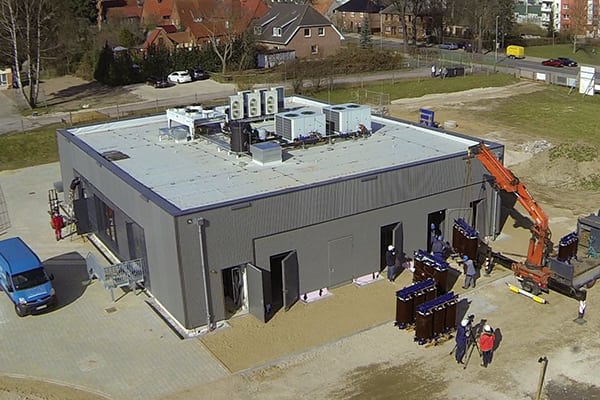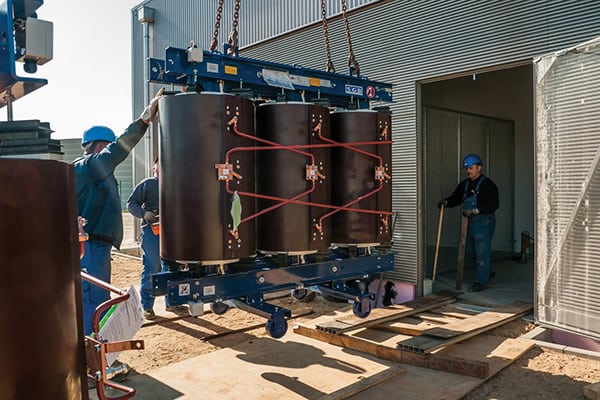Europe's Largest Commercial Battery Storage Facility Opens
Just as POWER predicted in its May issue (see “The Year Energy Storage Hit Its Stride”), energy storage is starting to gain traction, not only in the U.S., but around the globe. Europe’s largest commercial battery power plant was connected to the German grid in mid-September. With a power rating of 5 MW and an energy capacity of 5 MWh, the lithium-ion unit is expected to help stabilize frequency on the regional distribution grid by making short-term adjustments to balance supply and demand.
The system was designed and built by Berlin-based Younicos AG. It includes 25,600 lithium-manganese oxide cells—supplied by Samsung SDI—that can store and discharge power with a response time measured in milliseconds. The speed is important as more solar and wind energy is added to the German energy mix, causing unpredictable fluctuations in supply when cloud cover and wind conditions change quickly (see “Balancing Renewables with Li-ion Energy Storage” in the May issue). Other benefits provided by the system include the ability to help control voltage, provide black-start capability, and offer short-circuit protection.
The facility (Figure 3) is located next to a 110-kV substation in Schwerin about 100 kilometers east of Hamburg in northern Germany. It is owned and operated by WEMAG AG, a German green energy and natural gas utility that also operates the regional distribution grid. Its grid has an installed renewable generation capacity of more than 800 MW. Last year renewables accounted for about 80% of the energy distributed to consumers, but WEMAG expects that to reach almost 100% this year.
 |
| 3. A good neighbor. The school gymnasium–size battery hall sits on the edge of a residential district. Courtesy: Younicos AG |
The battery park is fully automated with an intelligent software system. The software incorporates AC battery management, battery power plant management, and supervisory control and data acquisition–integrated energy management systems. Working together, the systems control the interaction of individual cells and the entire array’s interface with the grid.
The facility is designed for continuous availability, while the software keeps the batteries in a state that is receptive to charging or discharging. Operating the cells within this so-called “comfort zone” is the key to long battery lifespans. The computer-optimized performance allows the battery supplier to offer a 20-year performance guarantee on the system.
The storage unit was built in 12 months. Five medium-voltage transformers (Figure 4), each weighing four tons, connect the battery to both the regional distribution and the 380-kV high-voltage grids.
 |
| 4. Steady as she goes. Transformers are carefully moved into the battery hall. Courtesy: Younicos AG |
Although €1.3 million (a 20% grant to cover first-of-a-kind technology risk) was received from the Federal Environment Ministry’s Environmental Innovation Programme, the remainder of the project’s cost is expected to be recouped by marketing energy from the battery in the primary power market.
“Our battery storage unit shows the way forward: it is the best technical solution for smoothing naturally intermittent renewable feed-in, and it is also commercially very attractive,” said Thomas Pätzold, technical director of WEMAG.
—Aaron Larson